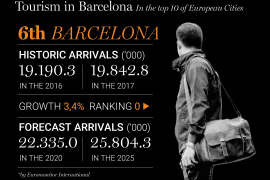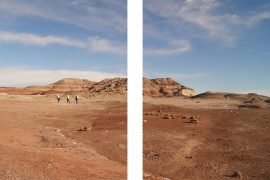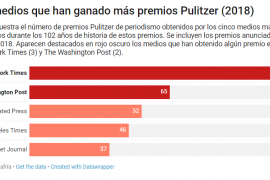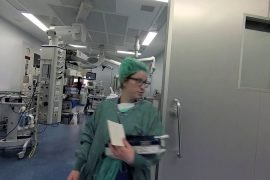[dropcap letter=”I”]
n the nineties, as the Internet revolution made its way into businesses and homes, little by little we became familiar with the concept of PC, e-mail, the idea of blogs or the changes in habits and new realities that opened up the possibilities of online commerce. Today they are familiar realities, to the point that even the least knowledgeable of digital questions has no difficulty in understanding Amazon’s business model. Since the end of the nineties—which may end up being known as the beginnings of the silicon era—the computational capacity of computers has not ceased to grow exponentially: possibilities that enlighten new horizons that only a few years ago were mere hypotheses in science fiction novels. Within this new wave of digital transformation that coincides with the Great Financial Crisis of 2008, stands out what we know as Artificial Intelligence, or AI, one of these new concepts with great disruptive power, posing still greater challenges in the mid-to-long term.
 AI, an acronym that is perhaps not the best of choices—personally I find machine intelligence more convincing even if it clearly has less marketing punch—refers to the ability of computers, machines, to solve ever more complex problems. So far no problem, at least none related to the frontiers of known understanding: these are computers able to of execute increasingly complex sets of programming algorithms that allow responses to an increasing number of cases and situations—sometimes apparently infinite. For some time now, Machine Intelligence has been more efficient than the intelligence of humans, for example, when adding and dividing or calculating the weights of complex structures, optimizing routes and processes, distributing parking spaces on a plot of land, winning strategy games (even in those with the most difficult, elaborate rules), optimizing the setting of airline ticket prices, or even recognizing faces in security cameras at an airport, or writing texts, amongst a very long etcetera.
AI, an acronym that is perhaps not the best of choices—personally I find machine intelligence more convincing even if it clearly has less marketing punch—refers to the ability of computers, machines, to solve ever more complex problems. So far no problem, at least none related to the frontiers of known understanding: these are computers able to of execute increasingly complex sets of programming algorithms that allow responses to an increasing number of cases and situations—sometimes apparently infinite. For some time now, Machine Intelligence has been more efficient than the intelligence of humans, for example, when adding and dividing or calculating the weights of complex structures, optimizing routes and processes, distributing parking spaces on a plot of land, winning strategy games (even in those with the most difficult, elaborate rules), optimizing the setting of airline ticket prices, or even recognizing faces in security cameras at an airport, or writing texts, amongst a very long etcetera.
In all these cases, from a simple sum to facial recognition, it is about applications, programs and algorithms where the universe of possibilities is defined: outside the programmed domain, Artificial Intelligence shows that it is more artificial than intelligent. The great leap—as Max Tegmark points out in his Life 3.0 (Penguin Random House), a reference on the subject—will come when the machines are capable of learning by themselves, that is, of increasing their own mastery of knowledge. Experts in this question like pioneer Ray Kurzeil identify this moment—which should happen around 2045—as the singularity: from there on, since machines will be more intelligent than humans, it will be these, and not us, that will have the capacity to create and manufacture new and better machines.
Tegmark, who in my opinion also has a very reductionist and poor image of what a human being is—a very common vision in Silicon Valley today—does strive to put together a technological discourse that does not leave the ethical debate involving AI aside, searching for a ground where technical innovation does not conflict with human reality
Arising from this approach is, for example, the thesis of historian Yuval Noah Harari, divulged in his well-known book Homo Deus. The main flaw in Harari’s book—which despite its strong sales I personally believe has neither heads nor tails—is to reduce complex, multidimensional human intelligence to linear, Cartesian thought and thus easily replaceable by a set of algorithms—just read a bit Antonio Damasio or Howard Gardner on thoughts of how wrongheaded this is. The analysis sidelines any ethical, moral or transcendental consideration of the nature of people, seen as plain flesh-and-blood robots. In this sense, Tegmark’s work has a somewhat greater wealth than Harari’s description of the world of tomorrow, and includes an approach to the moral and ethical issues that emerge from this diagnosis, although these remain unanswered.
As occurs in the vast majority of books by other techno-evangelists, Tegmark sees no limits to artificial intelligence, so it is only a matter of time before it surpasses human intelligence and begins to set its own objectives; that is to say, with time, the machines will able to develop their own conscience as occurs in Isaac Asimov’s classic novel I, Robot. The bulk of the text focuses on the description of the main developments achieved in the field and is of great practical interest, identifying with great acuity the challenges that may emerge in the mid-term in many fields, starting with the political terrain and our liberties or, as I mention at the beginning, anticipating ethical and moral challenges. Tegmark, who in my opinion also has a very reductionist and poor image of what a human being is—a very common vision in Silicon Valley today—does strive to put together a technological discourse that does not leave the ethical debate involving AI aside, searching for a ground where technical innovation does not conflict with human reality.
It advocates, in short, for a digital revolution that is not alienated from the affairs of man and that is not governed solely by economic criteria, but maintains a holistic approach to the forces that are driving the Digital Revolution. A proposal that includes a layer of varnish, although not too thick, of renewed humanism in the field also of the pure sciences.
An understanding of what future awaits us will be reached as much by knowing the technical possibilities of our time as, above all, being good judges of human nature. Which is why I strongly recommend reading Tegmark’s book—being abreast of the prospective world has never been as important as now. But I encourage you to match it with a good novel. I can think of Huxley’s Brave New World
Still, as noted in Harari’s case, the comparison made throughout the book between the intelligence of machines and the nature of humans is very simple and imprecise, leading to distorted conclusions, possibly very far from what we truly expect of the future. I consider that it is at the very least questionable to think that flesh and blood people can be reduced to lines of code, flesh and blood people with the ability to feel, create, destroy, move and excite, to conceive entire universes, among many other absolutely amazing things which we often cannot even begin to understand—it must be remembered that the brain continues to hold enormous mysteries for science.
Can we reduce the sentiment perceived upon entering the Sistine Chapel or the nave of the Sagrada Família to an algorithm? Can you capture the truth contained in the novels of Proust or Tolstoy? Is the emotion from a Beethoven musical piece comprehensible to a computer? The moral, the ethics, the feelings, the creative longing or the sense of transcendence are part of our physiology as a species; trying to anticipate the future of our species without taking into account our true nature leads us to the same results as those afforded by the neoclassical models of homo economicus. No very promising. An understanding of what future awaits us will be reached as much by knowing the technical possibilities of our time as, above all, being good judges of human nature. Which is why I strongly recommend reading Tegmark’s book—being abreast of the prospective world has never been as important as now. But I encourage you to match it with a good novel. I can think of Huxley’s Brave New World, as just one example.




















